In-Home Streaming Faceoff: Steam Remote Play vs. Moonlight
Between Stadia, GeForce Now, Microsoft xCloud, and other contenders similar Shadow, game streaming is seeing a truthful resurgence. Cadre internet infrastructure and encoders have picked upwardly significantly since OnLive's epic failure a decade ago.
Just as importantly, the thought of streaming media is now embedded in the public witting: We've got Netflix, we've got Spotify, so why non games, also?
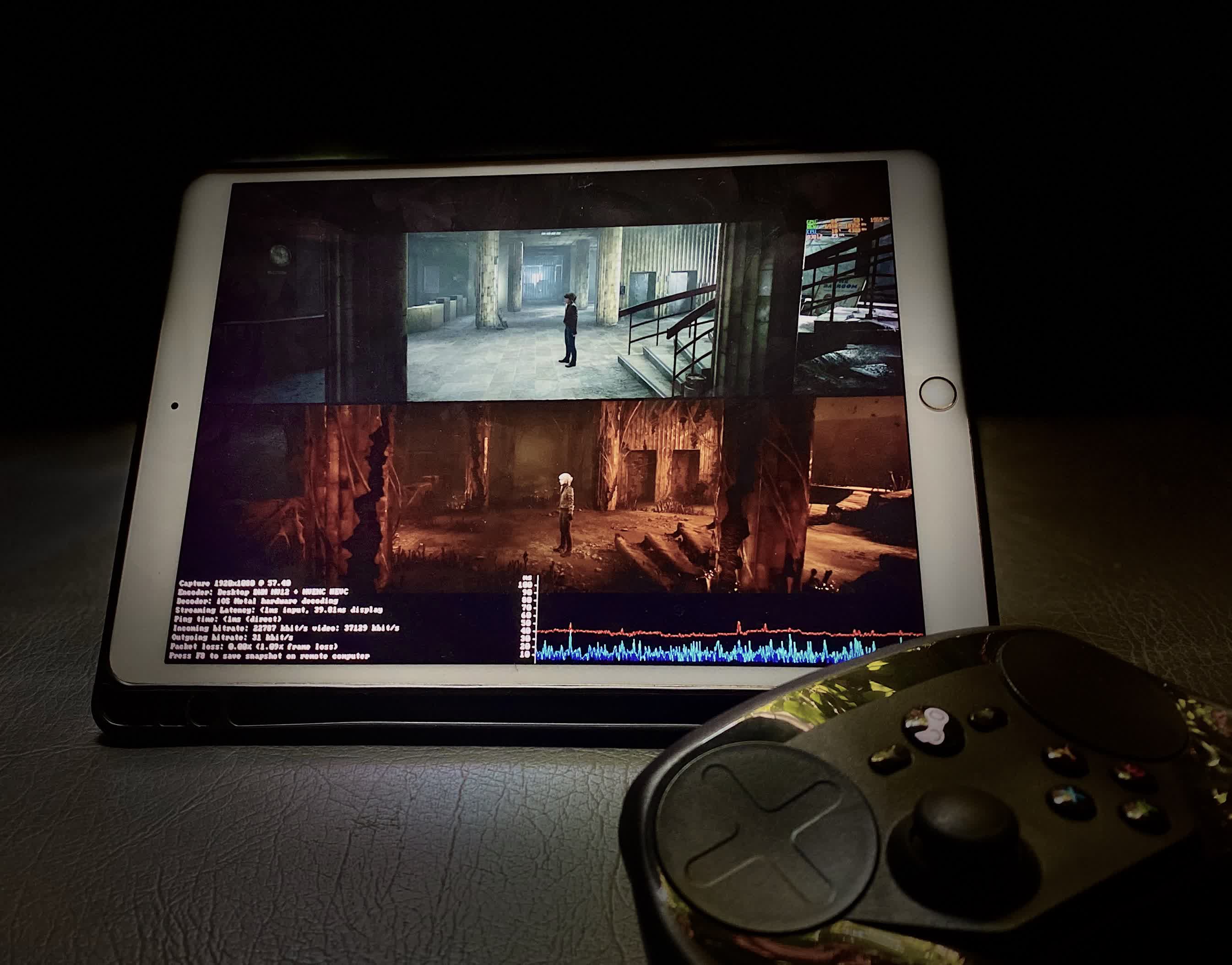
Remote game streaming even so has a ways to get though: not everyone has gigabit net, and some amount of latency is unavoidable unless yous're physically close to the servers.
Just what about in-domicile streaming? In these homebound times, "remote," more than often than not means your bedroom, as opposed to your workplace or a different boondocks. In-home streaming solutions have come a long way, too. But unlike remote streaming, a top-quality in-home streaming experience is within reach, with small hardware requirements.
Whether yous just want to play Skyrim in bed, or have your your piece of work apps with you to the living room, solutions like Steam in-dwelling streaming and Moonlight offer a near-flawless experience. As a affair of fact, while I'm typing out this article, I happen to exist using an iPad Pro x.5" streaming Windows 10 desktop over Steam Remote Play.
In this slice, I'one thousand going to share my experiences with these ii local streaming options. Which one'southward better? How much does latency bear on the experience? And really, tin you lot play Skyrim in bed?
What's Steam Remote Play? What's Moonlight?
If you're an iOS or Android user with an Nvidia graphics carte, these are your go-to options for in-home streaming. They're both implemented differently, however.
Steam Remote Play is (patently) tied to your Steam account and to the Steam app on Windows. Y'all need to run Steam for Remote Play to piece of work. On the other paw, Moonlight uses an open-source implementation of Nvidia's GameStream technology and works through GeForce Experience. Both of these apps exercise fundamentally the same matter, though: they stream compressed audio and video feeds from your PC games to your iOS or Android device.
Because these solutions are embedded in Steam and GeForce Experience respectively, you don't need any additional software on the host side, but you will need to download a game client on your mobile device. You can get them right hither:
Download Steam Link
- Steam Link on the App Shop (iPad and iPhone)
- Steam Link on Google Play, APK standalone (Android devices)
Moonlight:
- Moonlight Game Streaming on the App Shop (iPad and iPhone)
- Moonlight on Google Play (Android), also for Amazon devices and Chromebooks
Why would you selection 1 over the other? In our testing nosotros tried to measure specific aspects of the experiences such as latency, high refresh charge per unit support, paradigm quality, compression and bear on controls.
Our desktop test rig is running a GeForce RTX 3080 and a Ryzen 9 3900X. We used a Netgear R6260 AC1600 router, with the PC connected via Ethernet. This is extremely important to keep in mind: a hardwired connection between your PC and the router tin can bring latency downward considerably.
Our primary device for streaming was an iPad Pro x.5" and an LG ThinQ G7 to test out Moonlight's input latency. Nosotros did this considering the iOS version of Moonlight doesn't feature a full operation overlay. Nosotros capped the bitrate at fifty Mbps on both devices, with x265 encoding enabled and a 1080p render resolution. This represents more or less standard usage weather. Steam Remote Play's video quality setting was inverse to "Fast." At that place is a slight boost to both image quality and latency if you select "Balanced" or "Beautiful" instead.
Latency
Both setups delivered remarkably similar results, with latency in the 20 ms range. This is an order of magnitude ameliorate than the 150-200 ms latency in most Google Stadia titles. Moonlight performed slightly better, with gameplay occasionally running in the 18-20 ms range. However, in practice, we found it hard to distinguish latency on either Moonlight or Steam Remote Play. When compared head-to-head with a native keyboard/mouse experience, both streaming options felt a chip sluggish. But without that frame of reference, it was very hard to tell.
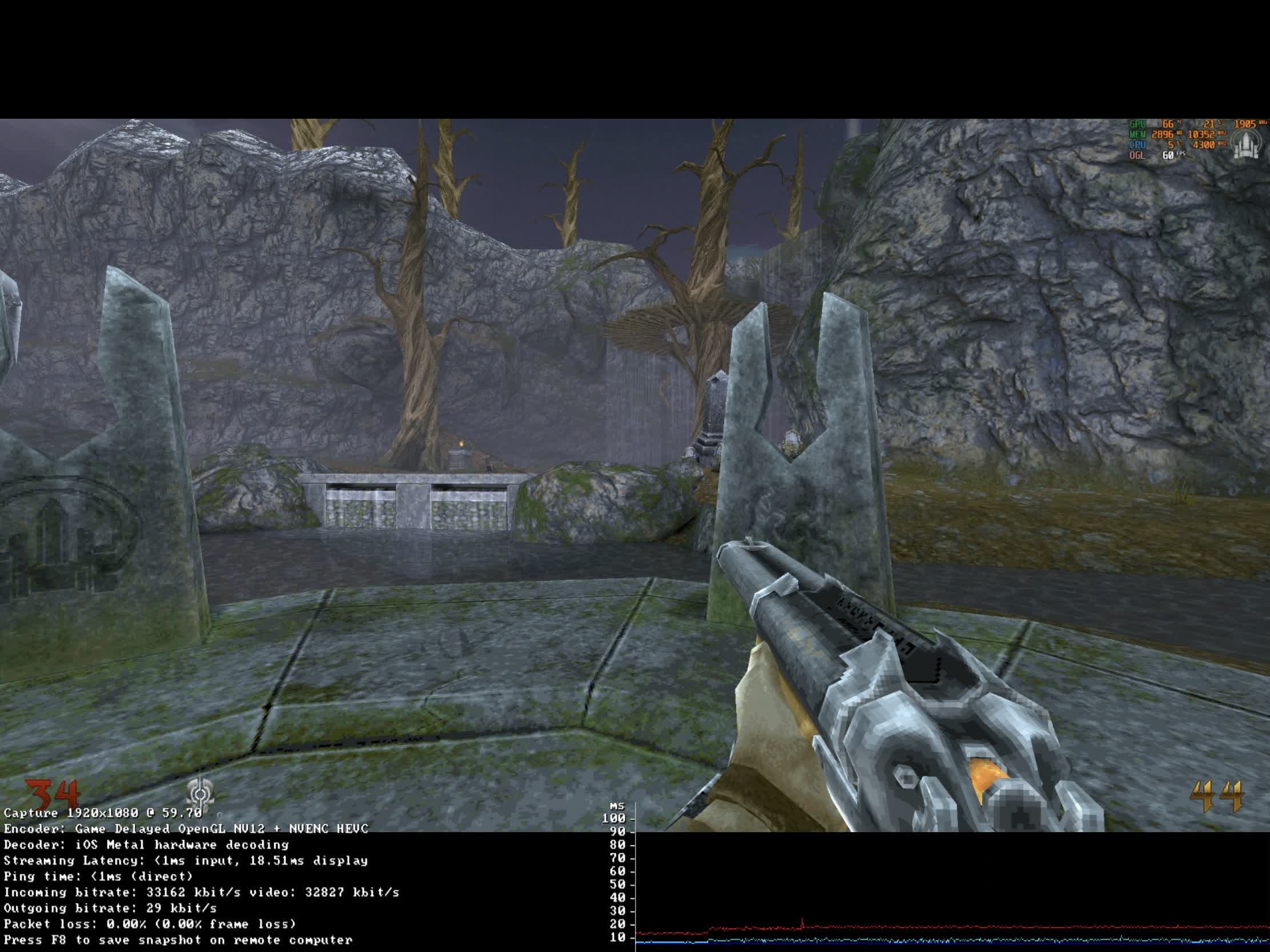
Wrath: Aeon of Ruin handled merely like a typical iOS or Android game. Considering that many mobile titles run at 30 FPS (with dips below), input lag was actually lower than the typical native gameplay experience.
From a latency standpoint solitary, it's a toss-upwardly: both Steam Remote Play and Moonlight manus in equally stellar results.
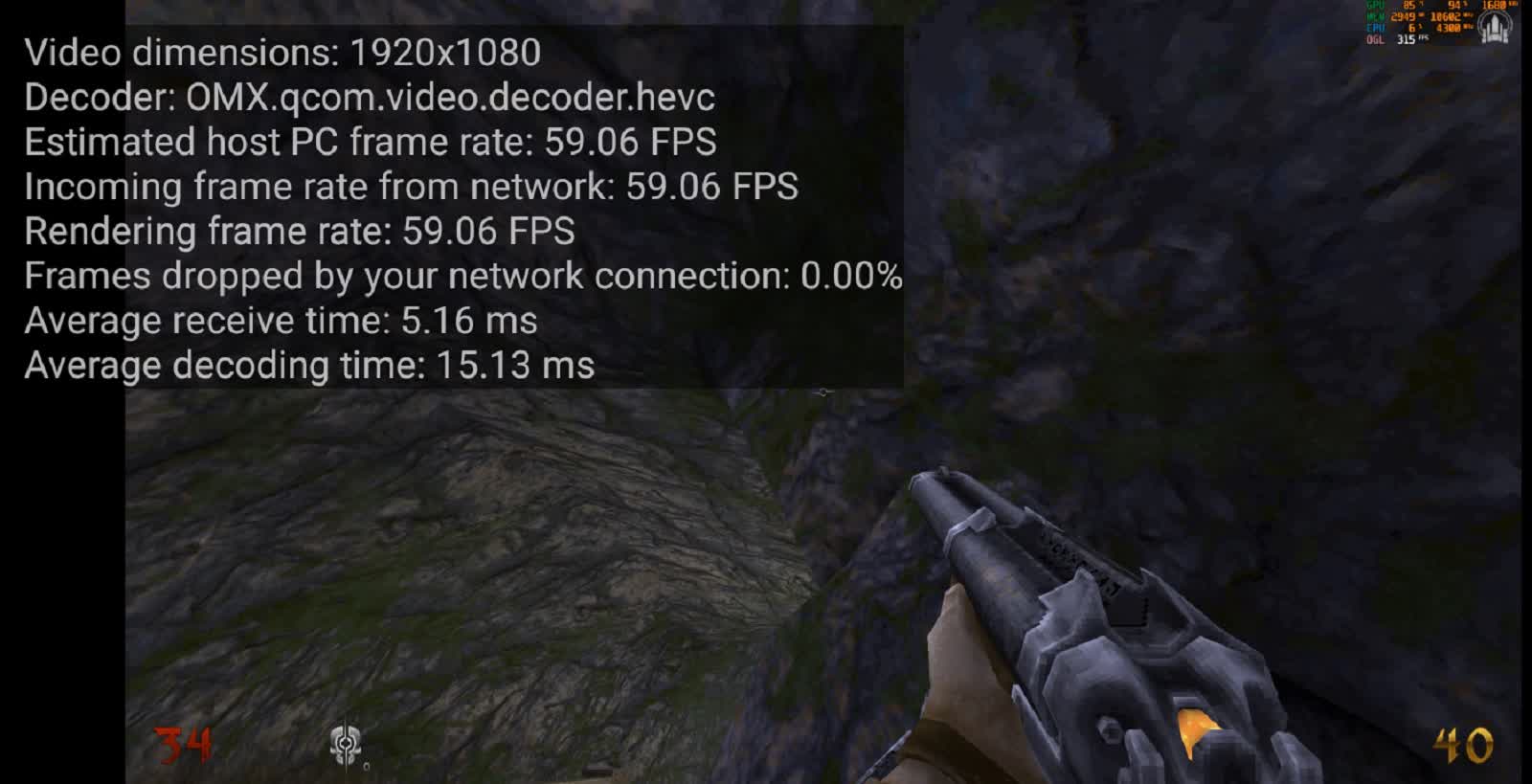
High refresh rate support
Manufacturers similar Samsung and Apple tree are increasingly using high refresh rate panels on flagship smartphones and tablets. This opens the door to silky smoothen loftier-refresh game streaming if it'due south a supported feature. Unfortunately, Steam Remote Play tops out at threescore Hz.
Moonlight, on the other hand, supports xc Hz and 120 Hz panels. We tried out Moonlight's 120 Hz way on the iPad Pro'southward ProMotion display. This required a bit of fiddling with custom resolutions in the Nvidia command panel, but we were impressed by the results.
Perceived input latency was lower than Steam Remote Play at lx Hz and very close to the native PC experience. Interestingly, motion blur was lower on the iPad compared to our 1440p QNIX monitor. This meant that, at least in sure respects, streaming image quality was ameliorate than native.
Epitome quality and compression
Both Moonlight and Steam Remote Play back up HEVC (x265) encoding. HEVC offers x264-equivalent image quality at a lower bitrate or superior pinch at an equivalent bitrate.
When streaming college resolutions and framerates, HEVC is critical to ensuring a low latency experience. While nevertheless frames held up well in both Steam Remote Play and Moonlight, we noticed that Remote Play generally looked better in movement, everything else beingness equal.
Despite the high pixel density of the iPad Pro'southward display, fast-moving scenes noticeably degraded prototype quality: it'due south of import here to differentiate motion blur from pinch artifacts. Every bit we mentioned earlier, motion blur is lower on Moonlight when using its high refresh mode. But in the thick of the action, Steam Remote Play tends to hold up a bit ameliorate. The "Balanced" and "Cute" image quality modes further boost image quality at the toll of 5-10 ms of latency.
Touch Controls
Steam Remote Play wins hands-down hither. Moonlight features extremely bones touch on controls: essentially a virtual Xinput controller with buttons placed as they would be on an Xbox One controller. It'south next to impossible to press multiple buttons at a fourth dimension in Moonlight or even to aim reasonably well with the virtual thumbstick.
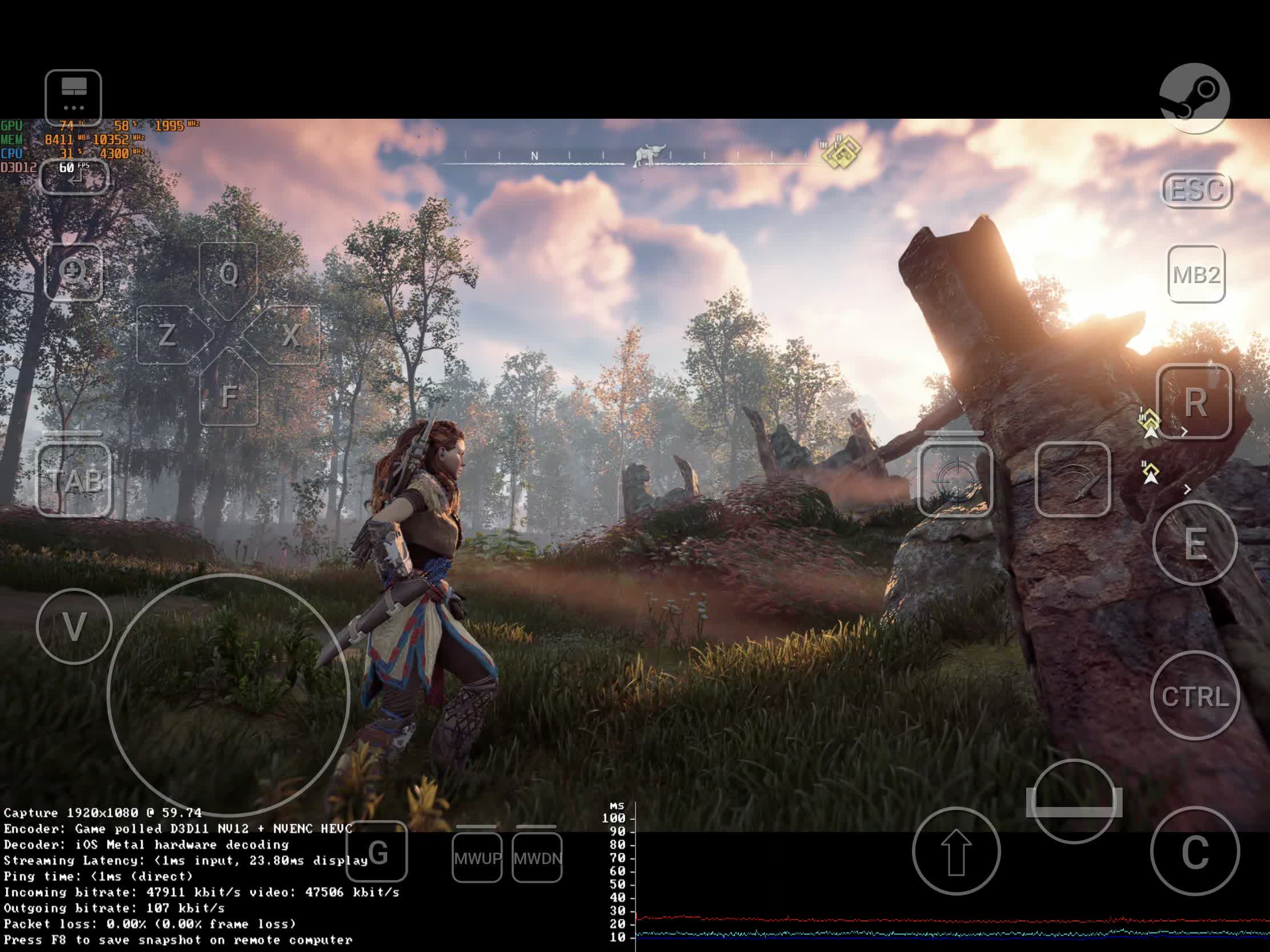
Steam Remote Play, on the other mitt, features support for Steam Large Picture controller remapping. This gives you about unlimited flexibility to map bear on controls, button combos, and aiming styles. Even better, y'all get admission to community and programmer-congenital affect command profiles.
In games like The Elder Scrolls Five: Skyrim, these custom configs tailored the controls to deliver something approaching a native mobile experience. If you lot don't accept a mobile controller on-paw, Steam Remote Play's bear on controls are more than adequate.
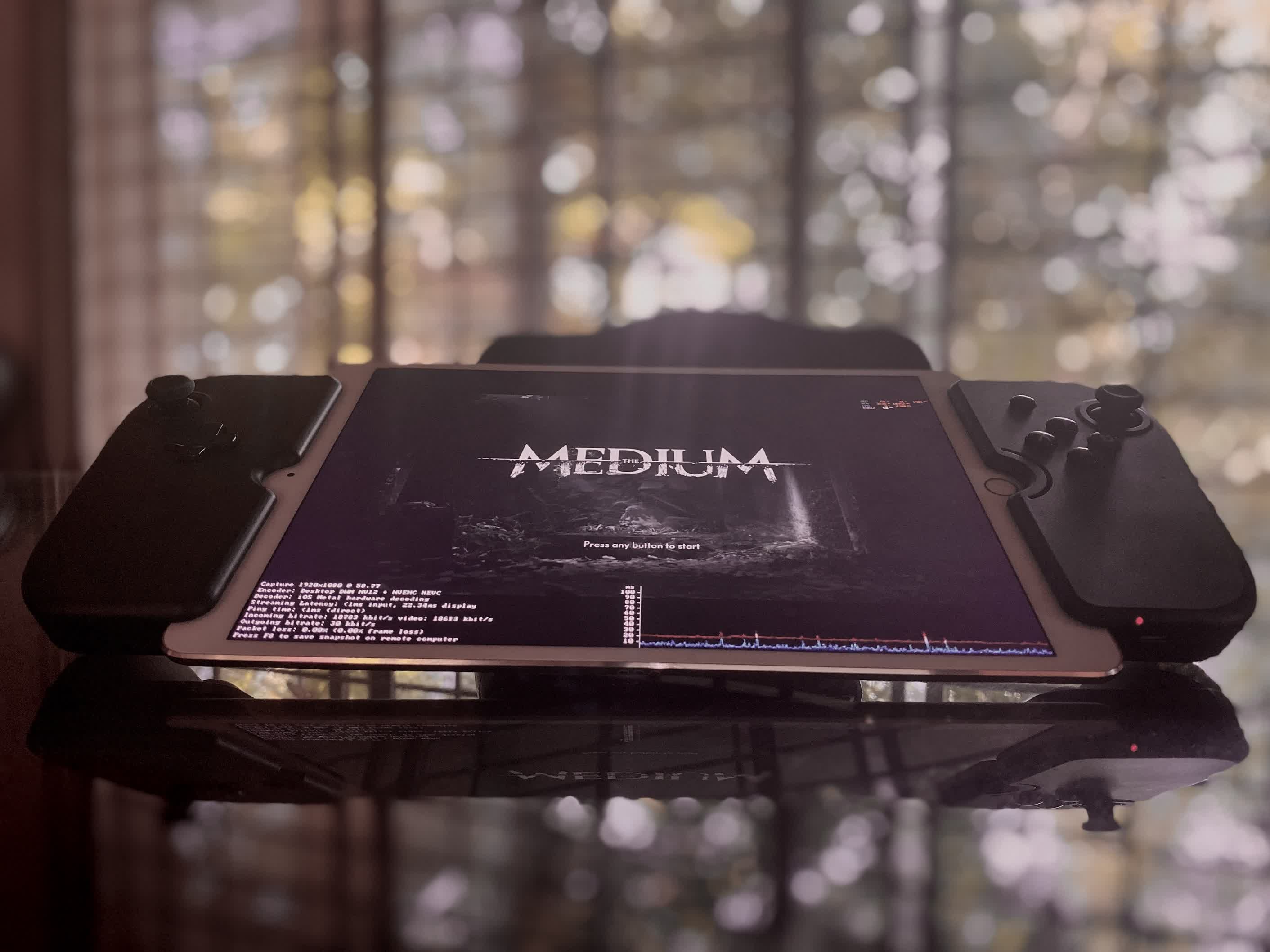
Nosotros also tested both streaming clients with a GameVice controller. While some games, similar 2D platformers and ARPGs handle reasonably well with a affect screen, a physical controller is substantially better, even compared to custom bear on controls. We noticed that Moonlight's input latency advantage was more than pronounced with the GameVice connected, specially when running at a higher refresh rate.
Closing Remarks
Both Steam Remote Play and Moonlight offering a solid (and complimentary!) in-dwelling house streaming experience. Both offer splendid input latency and image quality, to the bespeak that streaming is as good as or better than native mobile gaming. However, they both have their own sets of advantages and caveats. If you lot desire to stream games at a high refresh rate, Moonlight is currently the only option. Yous will have to put up with slightly worse image quality, but the lower input latency and smoothness are well worth information technology.
On the other hand, Steam Remote Play offers customizable impact controls. If y'all don't have a controller on hand, it's the only way to go, considering Moonlight'due south frankly awful default touch controls.
Steam Remote Play also appears to be a better selection if you plan on using in-home streaming for productivity workloads (to stream your entire desktop). At when we tested information technology, Moonlight suffered from an iOS bug that hides your mouse cursor, making it tough to navigate Windows. Steam Remote Play doesn't accept this upshot.
The real takeaway: in-dwelling streaming is completely viable. Use your mobile devices as clients, coupled with a capable PC and an entry-to-midrange router and you're ready to get. We've definitely come a long manner from the Splashtop days.
Source: https://www.techspot.com/news/88756-home-streaming-faceoff-steam-remote-play-vs-moonlight.html
Posted by: martinezboused.blogspot.com


0 Response to "In-Home Streaming Faceoff: Steam Remote Play vs. Moonlight"
Post a Comment